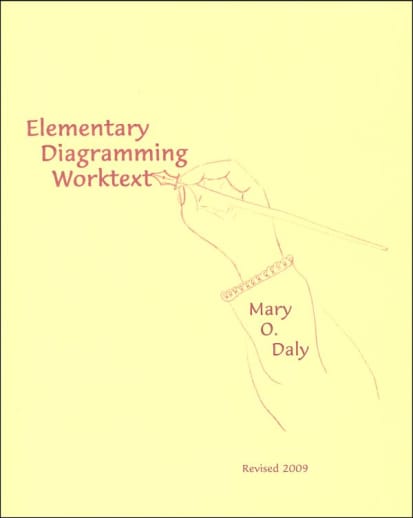These materials provide a thorough coverage of sentence diagramming, and they are perfect to supplement any grammar curriculum. The First Whole Book of Diagrams is essentially a diagrammer's reader. It simply holds pages and pages of diagrammed sentences. The pages are divided into sixteen chapters, each progressing in difficulty (new parts of speech are added to the diagrammed sentences). In the first chapter, the majority of the sentences are merely composed of a subject and verb. Subsequent chapters add articles, adjectives, direct objects, adverbs, prepositions, subordinate clauses, and other parts of speech. Students simply read through the pages, acquainting themselves with the diagramming language. A teacher's manual is included, providing thorough explanations of each part of speech, information about how they are diagrammed, and scripted conversations to engage in with the student. Spiral-bound, 212 pgs.
The Elementary Diagramming Worktext provides actual practice in diagramming sentences. It follows much the same progression as The First Whole Book of Diagrams, beginning with just subjects and verbs. However, this book holds just eight chapters and does not cover the more challenging concepts. In addition to subjects and verbs, it covers articles, adjectives, direct objects, linking verbs, adverbs, and prepositions. The worksheets offer thorough explanations and examples, plus plenty of exercises for children to complete. Children should be able to complete this book with little help from a teacher. 72 pgs, not counting the included answer key. - Melissa

